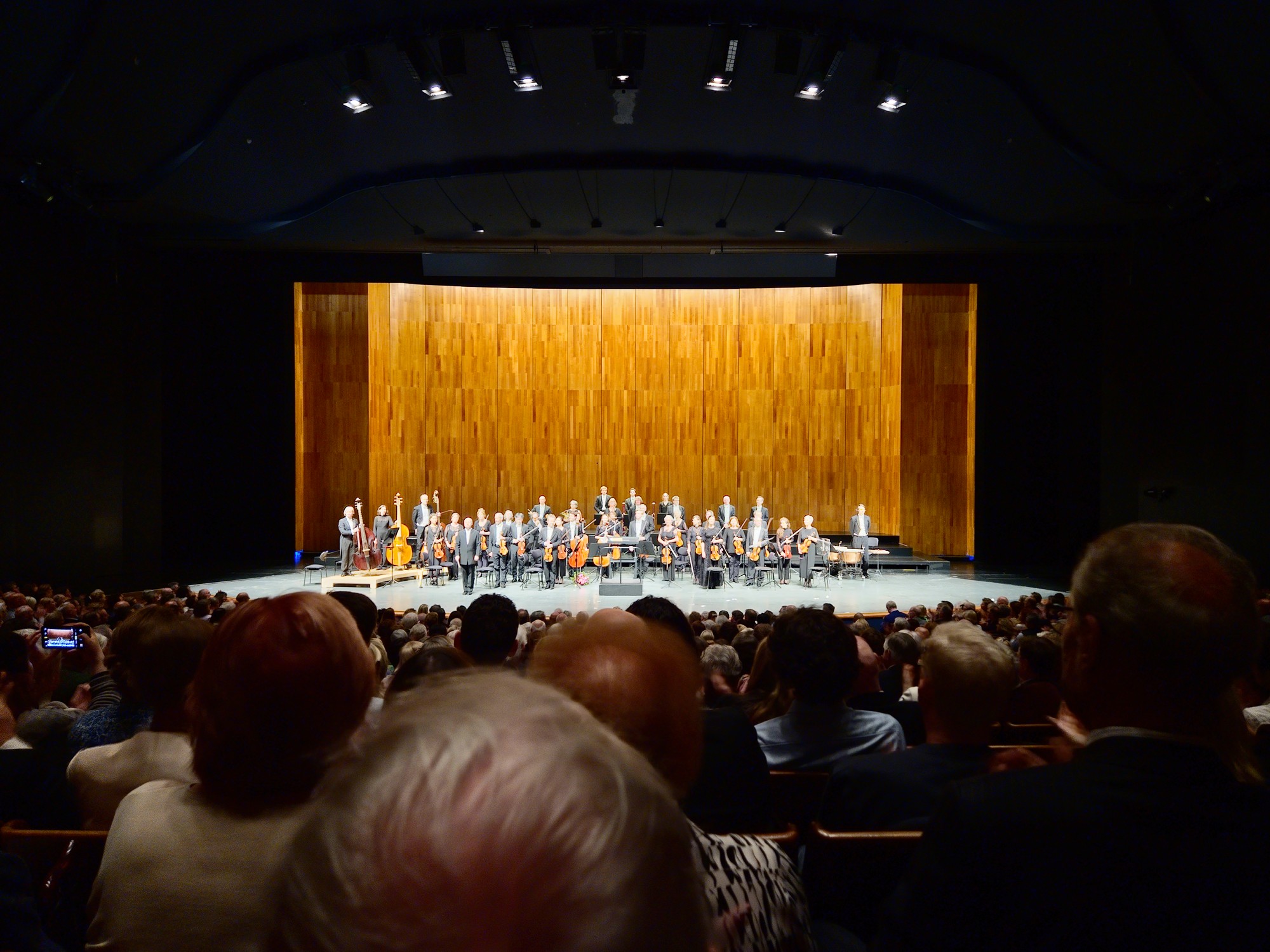Salzburg Walk, Austria
Salzburg is a beautiful city in Austria, famous for its baroque architecture, stunning alpine scenery, and rich cultural heritage.
Mozartplatz: Mozartpl., 5020 Salzburg, Austria
Salzburg Cathedral: Domplatz 1a, 5020 Salzburg, Austria
Great Festival House: Hofstallgasse 1, 5020 Salzburg, Austria
Date Picture Taken: May, 2022
It’s the birthplace of Wolfgang Amadeus Mozart and the setting for the classic film The Sound of Music. The city’s historic center is a UNESCO World Heritage Site, featuring impressive sites like the Hohensalzburg Fortress, Mirabell Palace, and Salzburg Cathedral.
I got a room close to Salzburg’s old town’s main street. I rode a public bus to the Mozart birth house, which is located at the center of the old town.
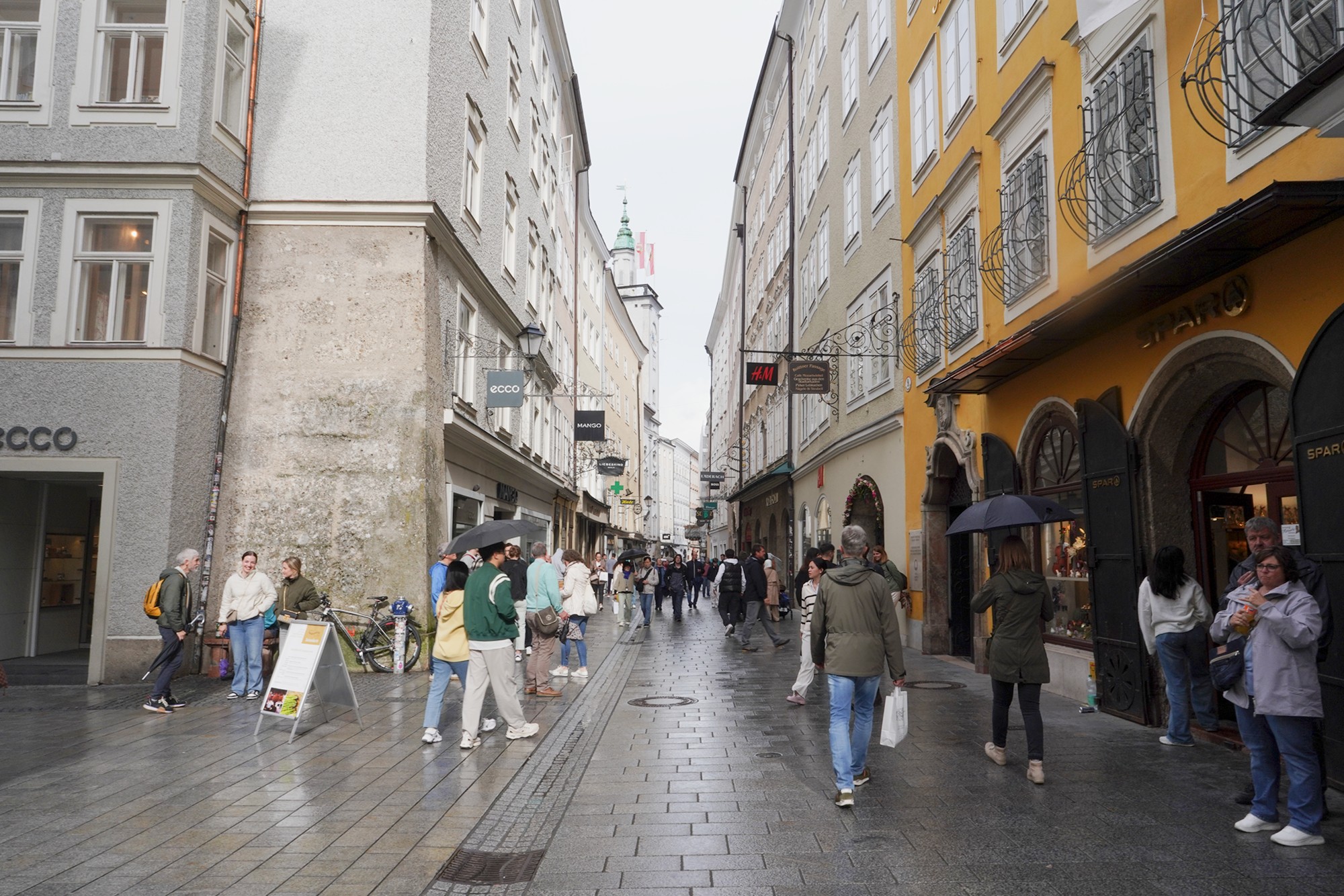
The yellow house is Mozart’s birth house.


The right side

The space in front of Mozart’s house

The left side. I walked to this side a little bit but turned around and walked to the right side first. I will come back here again later to walk this side.


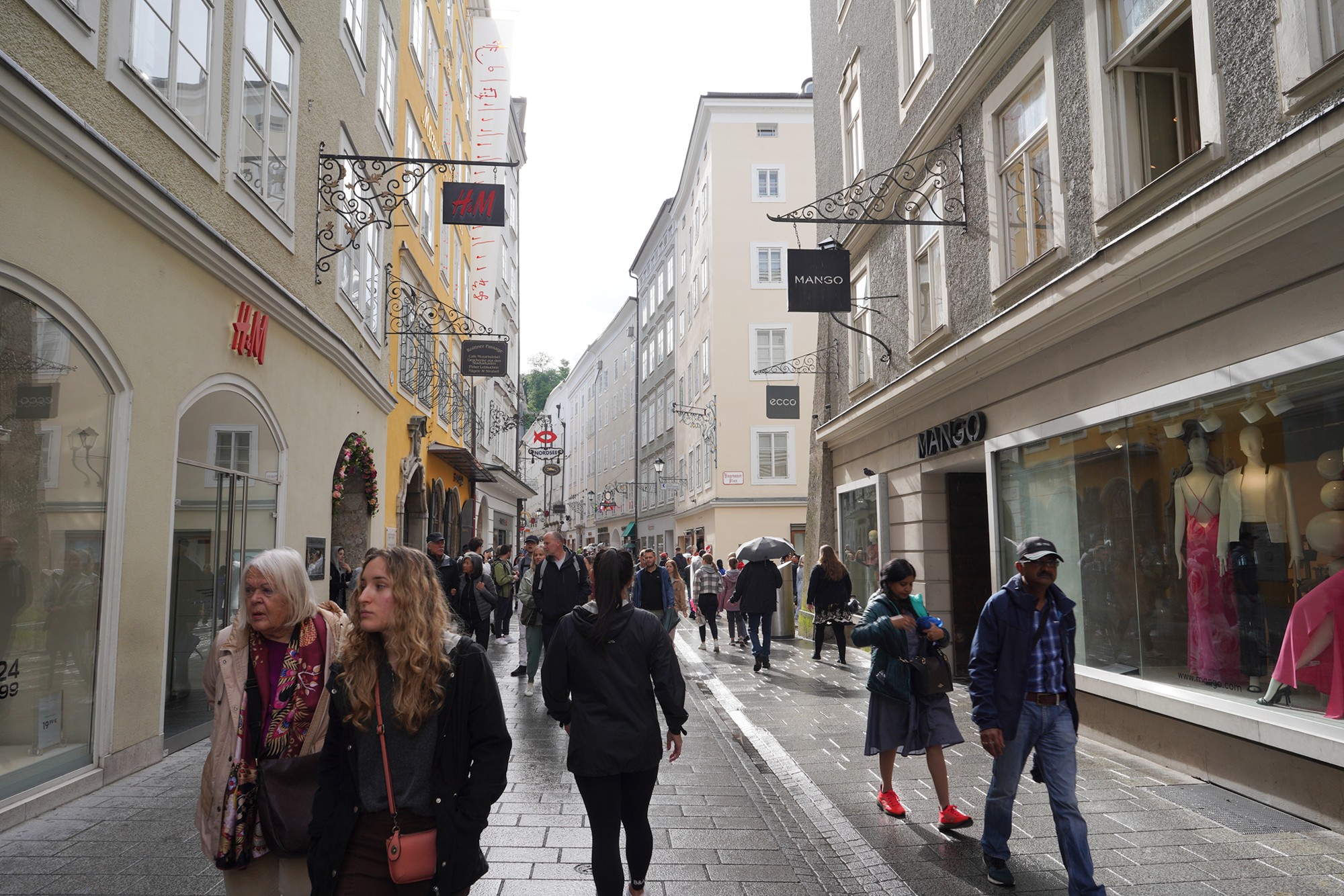
This street is called Getreidegasse. It’s one of the city’s most famous and picturesque streets, known for its charming, narrow, cobblestone path lined with historic buildings, traditional shops, and restaurants. This is the main street where most travelers walk around.

Getreidegasse is notable for its beautiful wrought-iron shop signs and its well-preserved medieval architecture. The street is a lively area with a mix of high-end boutiques, artisanal shops, and historic cafes, making it a great place to stroll and soak in the city’s atmosphere.


This little passageway goes to the next street. I will use this from the other side to come back to here later.




At the end of Salzburg’s Getreidegasse, directly on the cliff of the Mönchsberg, stands the heritage-protected St. Blaise’s church. Its roots go back to the 12th century.

A side street

The church was originally part of a hospital founded in the 13th century, and it has served various functions over the centuries. Its architecture reflects a mix of Gothic and Baroque styles, with an impressive interior that features ornate decorations, frescoes, and a stunning altar.


The right side

I turned around and looked back at Getreidegasse Street.

I turned to the left side and explored the area.




The Pferdeschwemme, or “Horse Pond,” is a historic fountain in Salzburg located near the Residenzplatz. Built in 1695, it was designed by the architect Kaspar Gras and served as a place where horses and carriages could be watered and washed.


Nearby is Hofstallgasse 4 Street.
On the left side is the Katholisch-Theologische Fakultät, or Catholic-Theological Faculty. This faculty is a part of the University of Salzburg and is dedicated to the study of Catholic theology and related disciplines.
On the right side is Great Festival House. The Great Festival House, known in German as the Großes Festspielhaus, is one of Salzburg’s premier cultural venues. It’s renowned for hosting major performances, particularly during the Salzburg Festival (Salzburger Festspiele), which is one of the most prestigious classical music festivals in the world.

Up on the hill is the Fortress Hohensalzburg


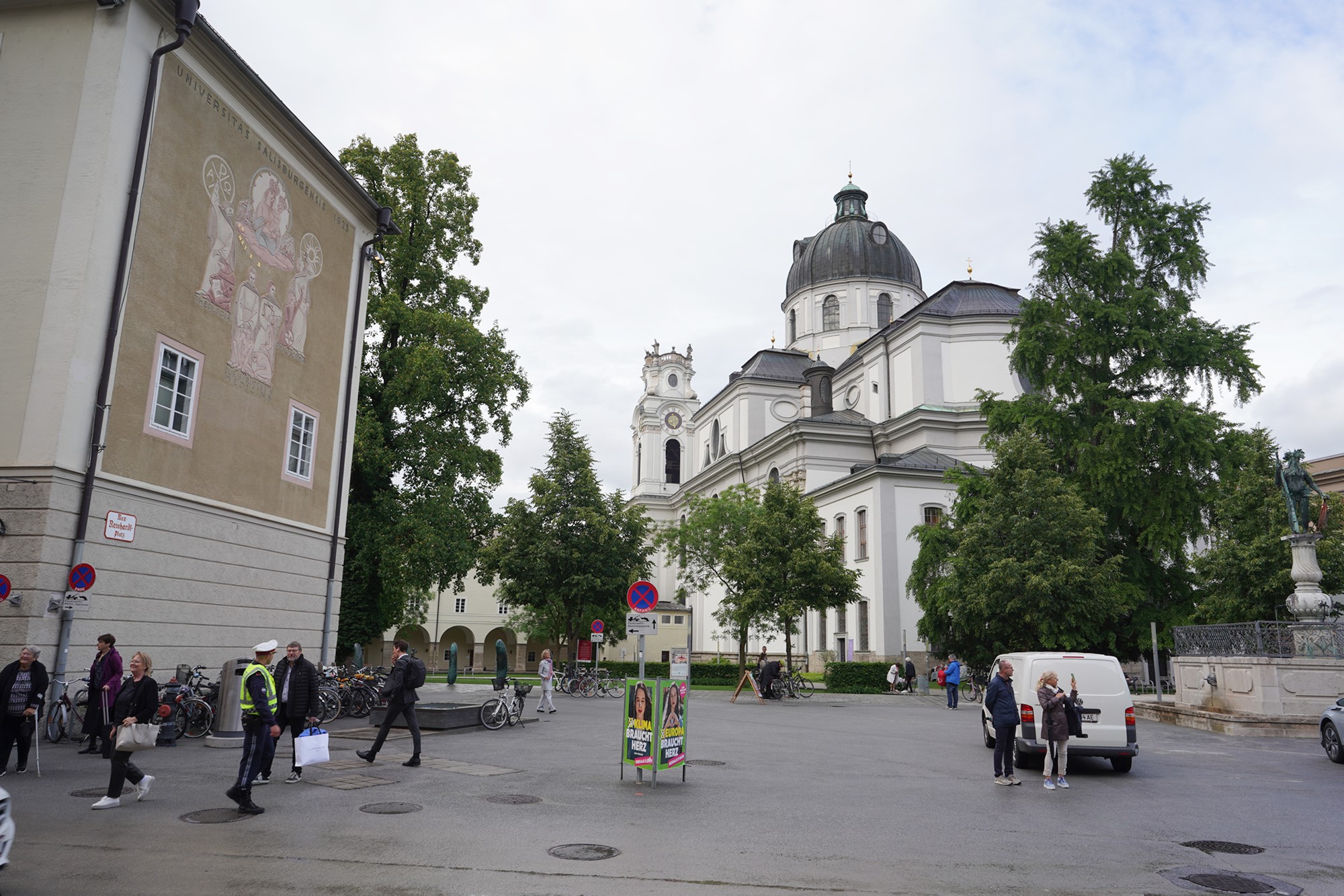

Next to the Great Festival House is the House for Mozart. The Haus für Mozart, or “House for Mozart,” was designed specifically to complement the Great Festival House. It provides an additional space for performances and events during the Salzburg Festival, with a focus on chamber music, smaller operas, and other intimate performances.

There seemed to be a concert in the House for Mozart since people were dressed up and hung around at the entrance.

I turned around and walked back to where I came from.


I came back to this area. This is the street next to Getreidegasse Street.



This street was not as crowded as Getreidegasse Street.

I walked through this passageway in the building to get back to Getreidegasse Street.






Came back to Getreidegasse Street

Looked back at the passage way

Next, I explored the right side of the street





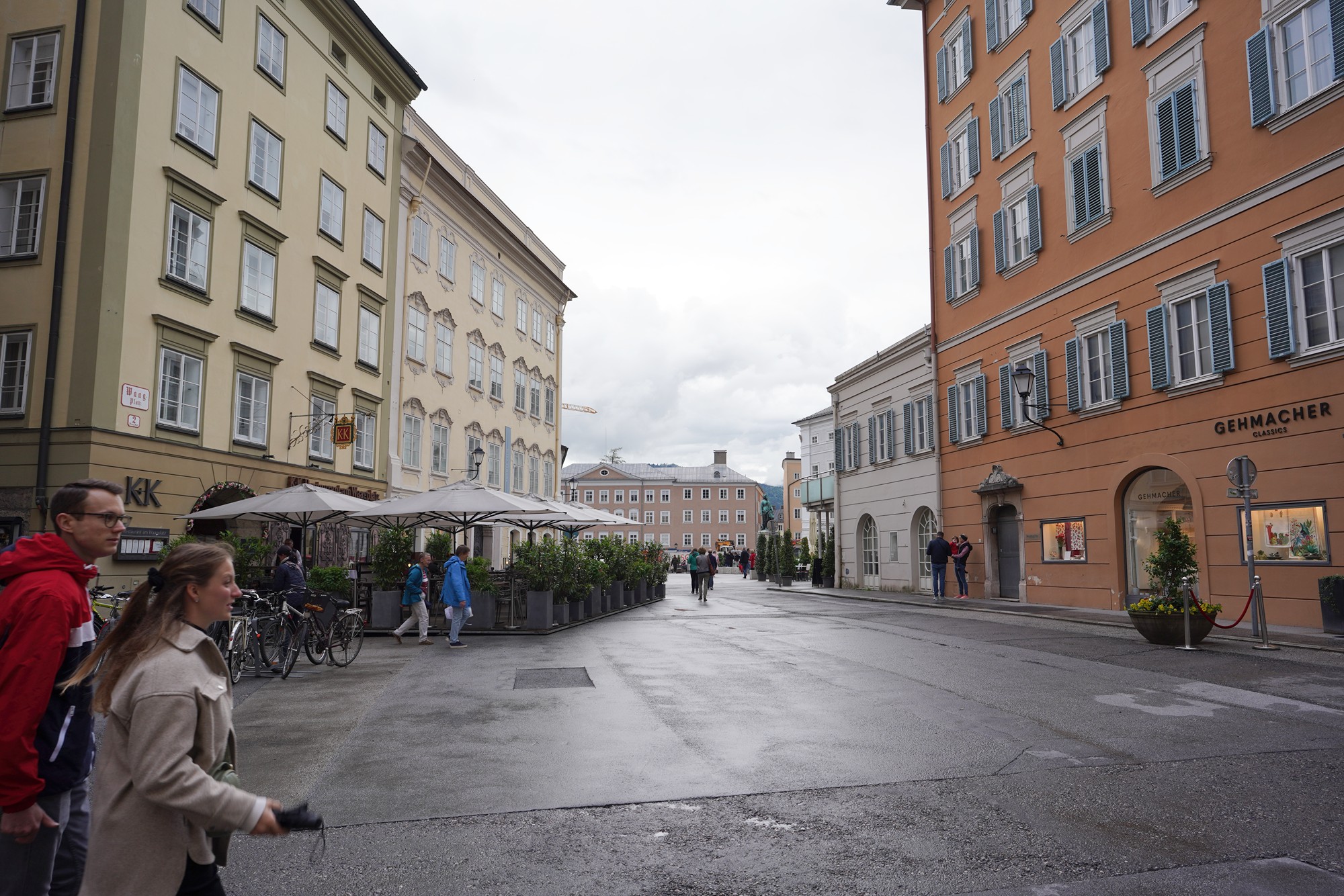

I arrived at Mozartplatz at the other end of Getreidegasse Street.

At the center of the plaza is the Mozart statue.
the statue was unveiled in 1842, nearly 50 years after Mozart’s death. It was created by the sculptor Ludwig Schwanthaler.
The statue depicts Mozart standing in a dignified pose, with a sheet of music in his left hand, symbolizing his genius as a composer.

I turned around and walked toward the Residenzplatz.


The Residenzplatz


Another look of Residenzplatz

The side view of the Salzburg Cathedral

The DomQuartier Salzburg


The DomQuartier Salzburg is a cultural complex and museum located in the heart of Salzburg, Austria. It offers a unique glimpse into the baroque history and architecture of the city, showcasing a collection of historic rooms, galleries, and museums that span over 1,300 years of art, culture, and history.


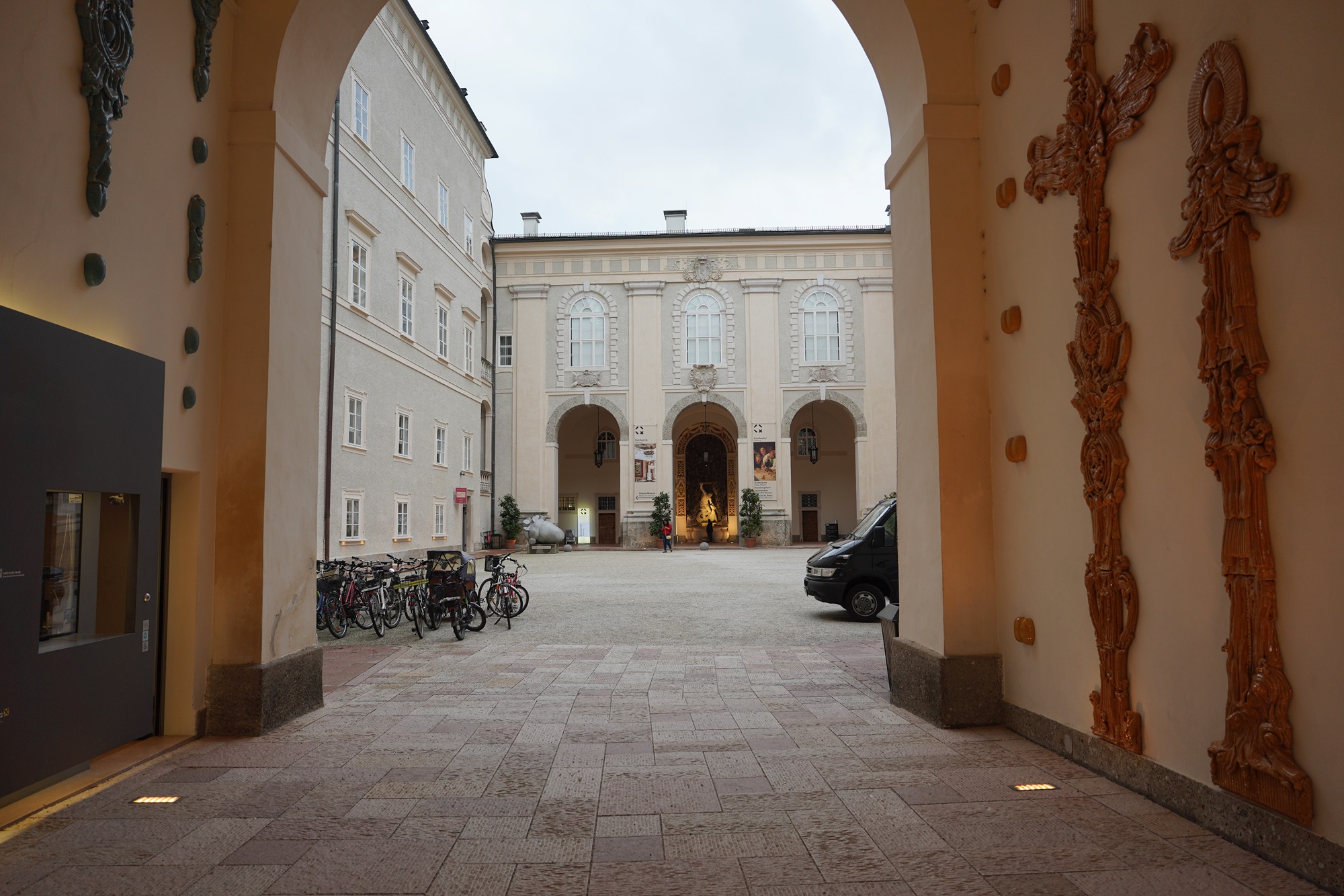


A small passageway


The Domplatz
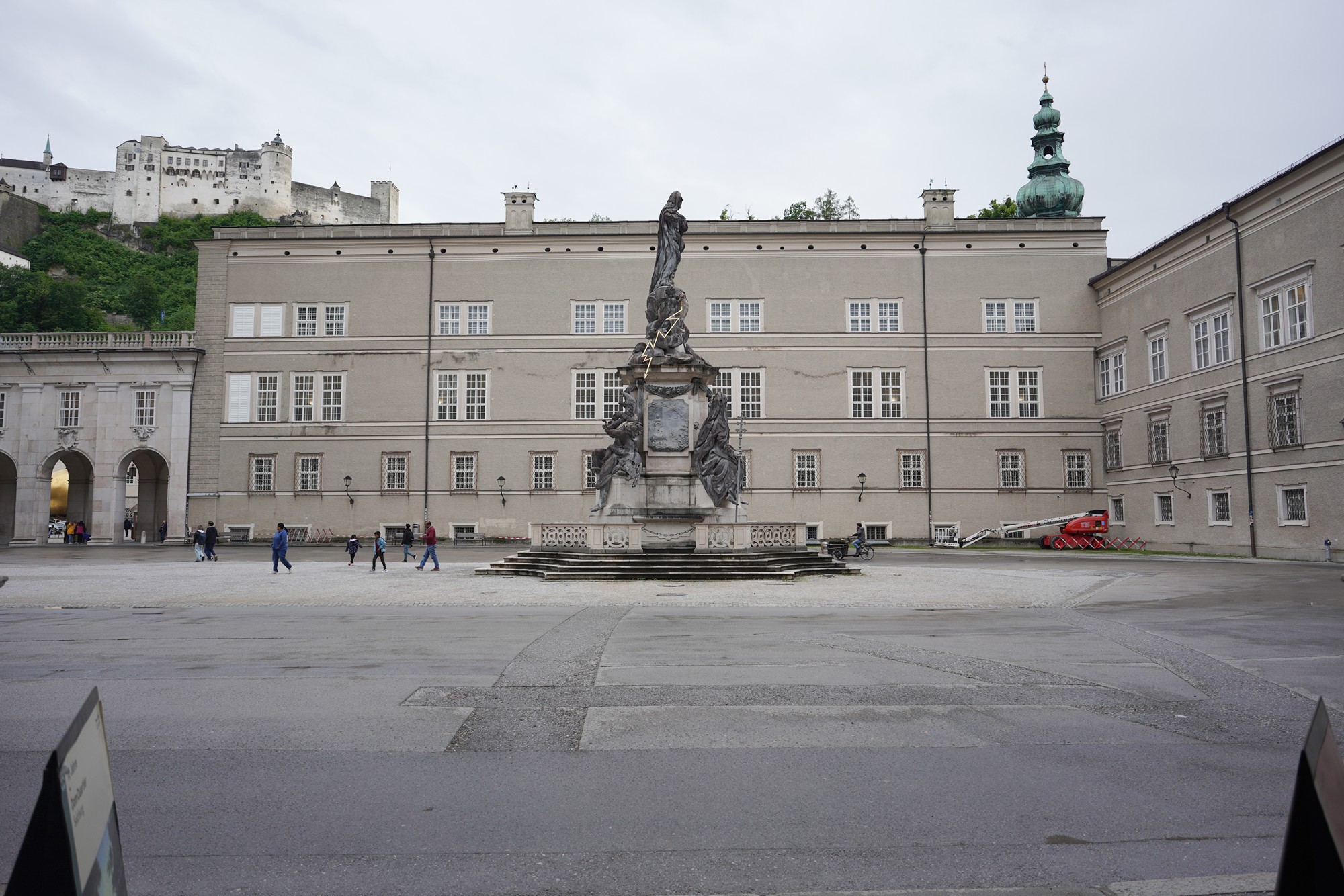
The Salzburg Cathedral’s front view
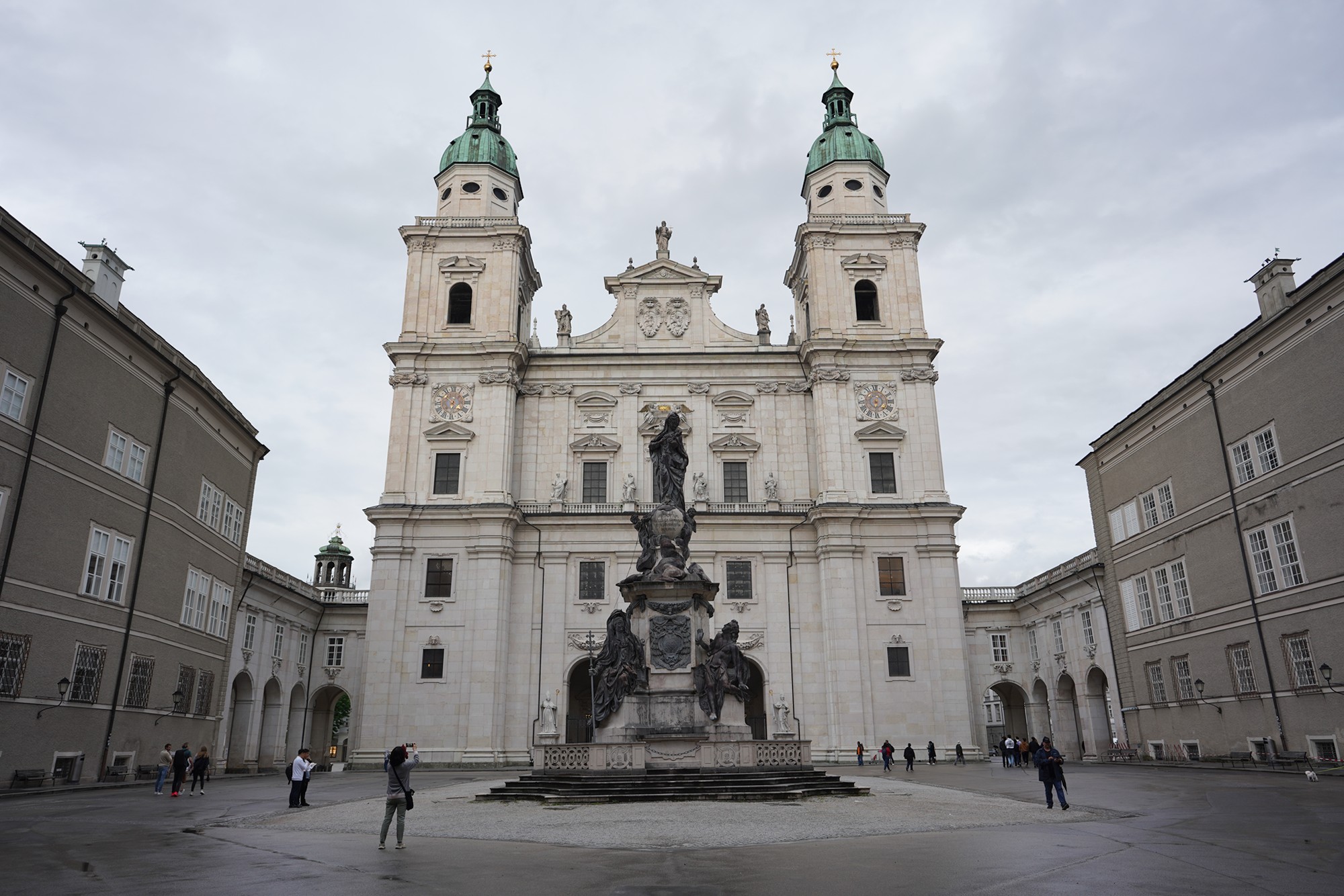
The opposite side of the cathedral


The St. Peter’s Abbey

Came back to Domplatz


Another passageway at the corner of the plaza


The Kapitelplatz


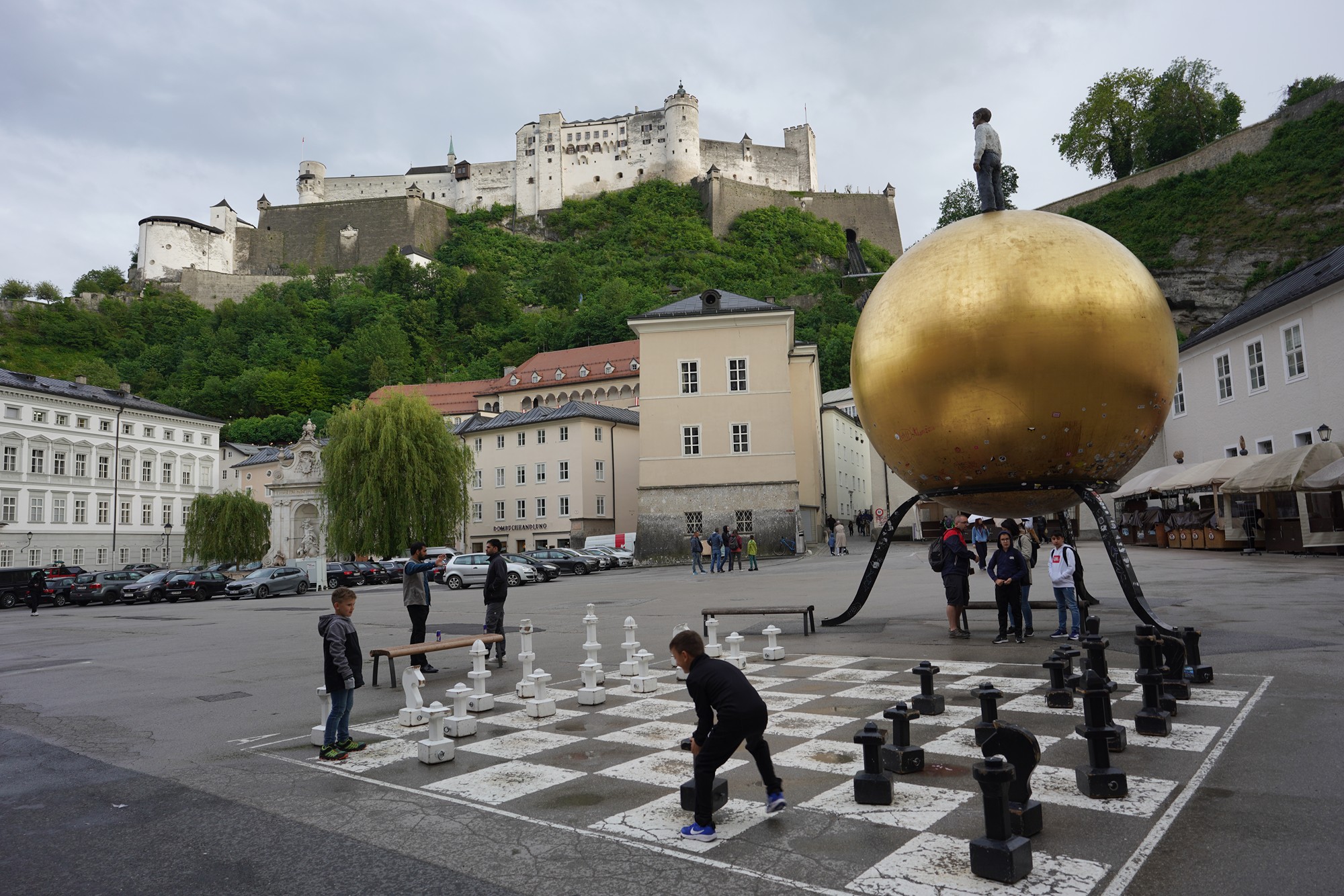
The Fortress Hohensalzburg is on the hill. It is one of the largest and best-preserved medieval castles in Europe.
The fortress was originally constructed in 1077 under Archbishop Gebhard during the Investiture Controversy, a conflict between the Papacy and the Holy Roman Emperor. It was expanded and fortified over the centuries, especially during the 15th and 16th centuries, to protect the archbishops and the city from invasions.

Came back to Domplatz

And back at the St. Peter’s Abbey

At the corner is a stairway to a higher ground
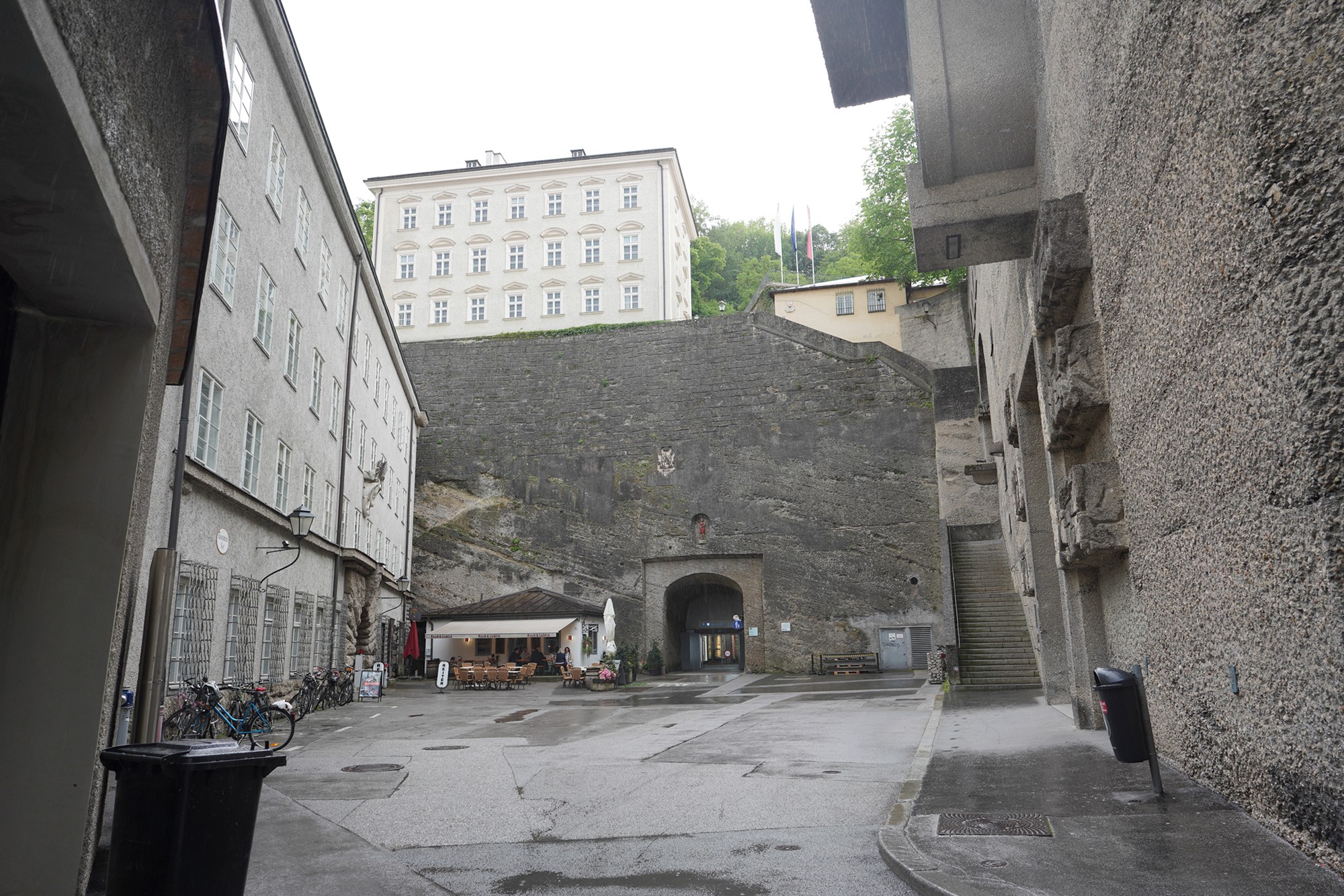
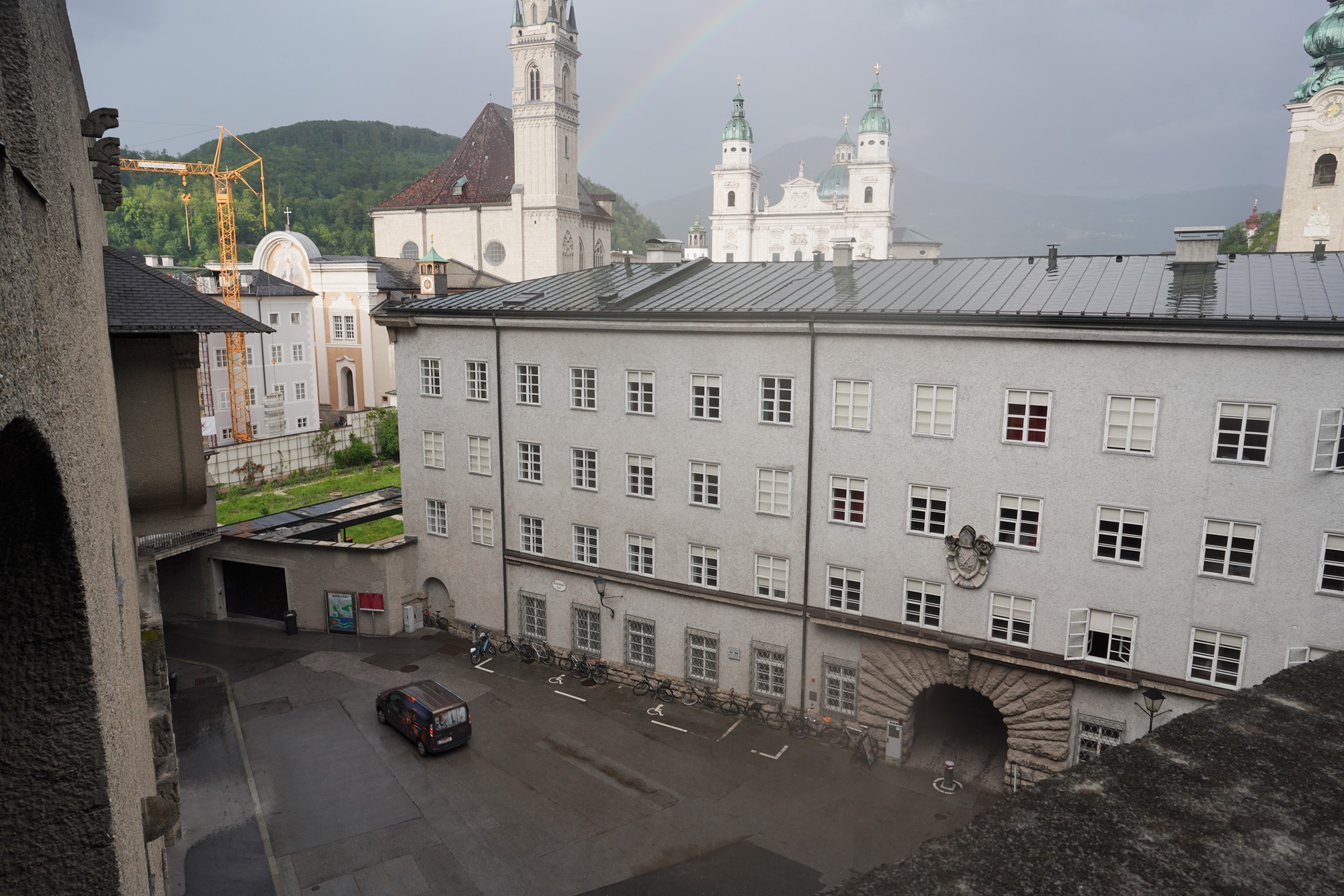

And next to St. Peter’s Abbey is the Great Festival House.

On a different day from when I took the picture for this Salzburg Walk blog, I attended a music concert at the Great Festival House.
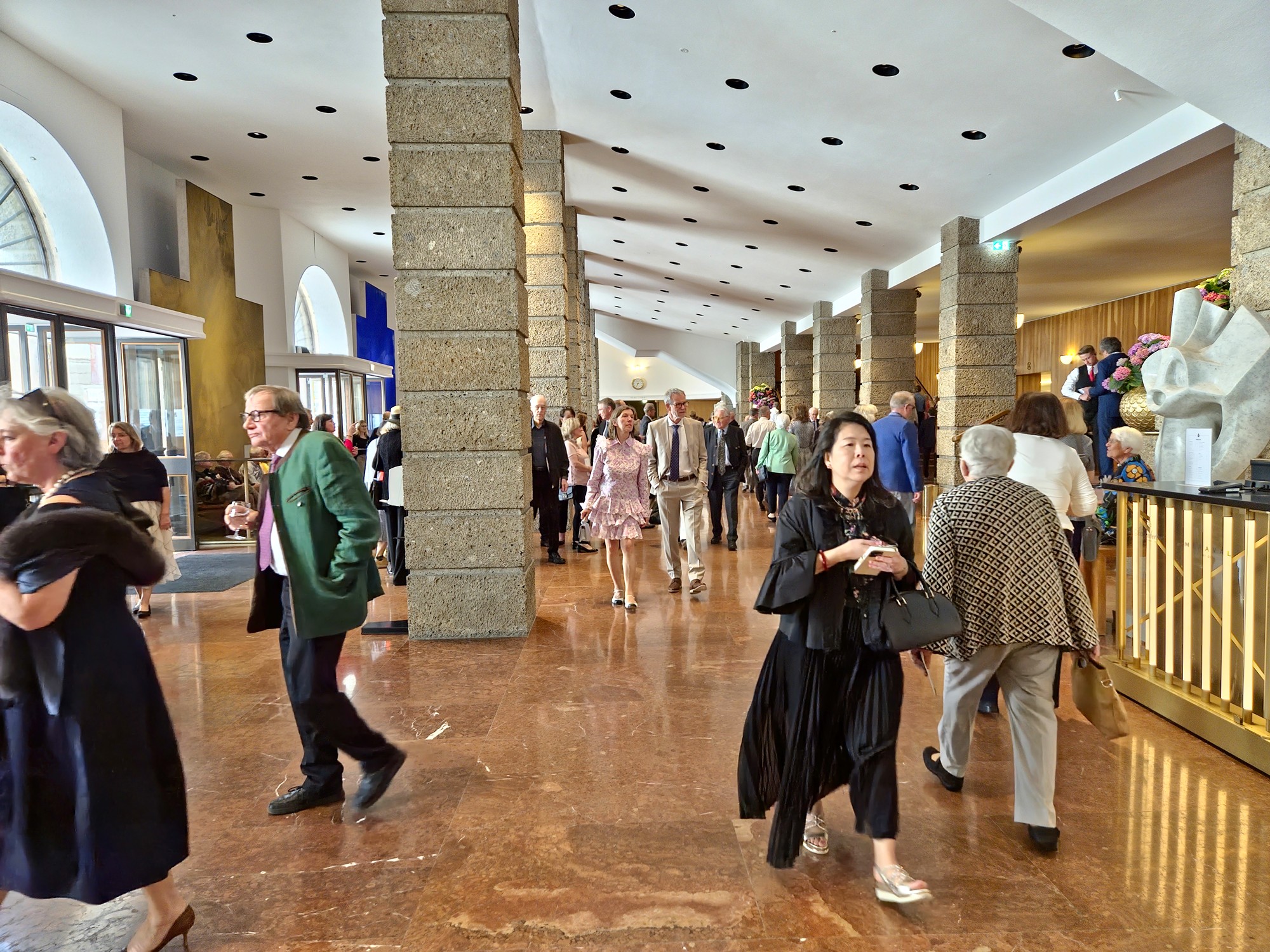
They don’t always play Mozart’s music, but the concert that I went to featured one Mozart piano concerto and two symphonies.



